The Hidden Costs Of Cutting Tools
This shop brought the hidden costs down by paying close attention to tool inventory.
Share




Shops looking to reduce their tooling costs generally focus on the price they pay and the quantity of tools they buy. They evaluate lower-cost suppliers. They optimize cutting conditions so tools last longer.
However, too few of these shops pay attention to the moment of the purchase. Buying a tool at the wrong time can waste money, too.
For example, a shop loses money when it purchases tools too early. The combined cost of all of the tools in the shop that have been bought but not yet put to use—tools in toolboxes as well as tools in the crib—is the amount of money the shop has tied up in tooling instead of earning an investment return somewhere else.
A shop also loses money when it purchases tools too late. The machine that sits idle because an urgently needed tool is on order is another example of an investment producing no return.
And simply purchasing tools too readily is a third source of waste. In theory, no new tool should be used if an appropriate reground tool is available. But in practice, making sure used tooling gets reground is a housekeeping chore that is easy to overlook. Plus operators tend to use the new, virgin tooling even when reground tools are available.
The potential costs of these hidden expenses—carrying inventory, surprise downtime, underused regrinds—are generally on the rise. Newer high speed and multi-process machine tools are more productive, meaning the value of any work lost to downtime is that much higher. And with these machines cutting faster and cutting more difficult materials, they use expensive tools for a larger proportion of their work. Regrinding therefore delivers more of a savings, and the tool crib may come to represent a considerable glut of tied-up capital.
The Ponca City, Oklahoma, facility belonging to Smith Tool is one shop that illustrates these points. In fact, it would be hard to find a better illustration. Smith Tool is a maker of rock bits for the mining and petrochemical industries. Aggressive hard turning applications require the shop to use cubic boron nitride (CBN) tools and lots of them. The high purchase price of this tooling exaggerates all of the secondary costs that go unexamined in many shops. While scaling back on CBN was not an option, the company did find room to cut its tooling costs significantly by establishing more effective procedures for how it manages these expensive tools.
Aggressive Cutting
Rock bits are the cutting tools used to drill the earth, but these cutting tools have moving parts. Three interlocking studded wheels break up the rock and carry the fragments away. (See Figure 1, at right.) The working force on the bit—often tens of thousands of pounds—is concentrated on the hubs of these wheels.
Preventing these hubs from wearing quickly accounts for an important design feature. While the bits’ major components are made of hard steel, the wear surfaces are made of even harder steel. On each hub, a pocket is machined into the 120 degrees of circumference that faces down and bears the brunt of the force. A proprietary alloy of harder steel is then welded into this pocket. (See Figure 2.)
The resulting part presents a machining challenge. Turning the hub to size after the secondary material has been added makes for an interrupted cut, even when the cutting tool remains fully engaged. With each rotation, the cutter hits two distinctly different materials.
At the same time, the application is also a traditional interrupted cut. The turned diameters feature flats and holes that have to be machined in place before the turning occurs.
Smith Tool was an early convert to single-point hard turning. The company has been cutting these parts instead of grinding them for many years now. Lead times were longer when the parts were ground, because every new bit design required a new custom grinding wheel and dresser. By making the parts through CNC turning and avoiding the wheel and dresser altogether, the company now brings new bits to market in about three to four months less time.
The challenge was learning how to turn these parts. Ceramic—a common cutting tool material for hard turning—delivers inconsistent and unpredictable life in many of Smith Tool’s applications. The company uses more expensive CBN instead, and even at that, the shop has devoted considerable experimentation just to determine what parameters would let CBN cut many of its parts reliably. Aggressive cutting can cause the facility’s 13 CNC lathes to consume 500 CBN inserts in a week. Even with streamlined inventory, it’s not uncommon for the shop to have $250,000 in CBN on site at any given time.
Freeing up the productive capital associated with this inventory was one of the most important steps the company took to cut its tooling expenses. Relief came from a new arrangement with the shop’s CBN supplier, Mastertech Diamond Products of Mentor, Ohio. In essence, Mastertech opened a tiny, tiny branch office on Smith Tool’s shop floor.
The CBN Machine
That “branch office” is the tool dispensing machine shown in Figure 3. It qualifies as the tool supplier’s branch office because the supplier owns the machine and all of the cutting tools inside. Smith Tool is not required to pay for any CBN tool until a Smith employee draws it out of the machine. By letting the company hold on longer to the price of each of these tools, this seemingly simple procedural change improves the cost efficiency of Smith’s process.
The relationship between the company and its tool supplier requires flexibility on both sides. Tooling applications supervisor Ernie Buford, for example, is the Smith employee most directly involved with the tool dispensing machine and its inventory. But he also does work for Mastertech, spending an hour or so per week restocking the machine with replacement inserts that do not yet belong to Smith Tool. Replacement inserts are shipped almost on a daily basis and stored in a secured cabinet until Mr. Buford transfers them to the machine.
He says the hour each week is a price he is happy to pay for the savings he sees in his tool budget.
Operators obtain CBN tools from the machine using a bar code scanner. An operator scans his own badge, then scans barcodes posted on the machine to identify the job, machine tool and insert number. (See Figure 4.) Fundamental to the effectiveness of this system, says Mr. Buford, is the software that runs the machine and captures and organizes this information.
A software change recently improved that effectiveness. “Cribmaster” tool management software from WinWare (Marietta, Georgia) delivered some small efficiency gains. Mr. Buford now e-mails the automatically compiled tool-use reports required for restock and billings, where once he had to fax this information. He also physically restocks the machine more quickly because of the software’s ability to execute machine motions more efficiently.
But the software also delivered this more significant improvement: It let Smith Tool achieve a further reduction in its CBN costs by making better use of regrinds.
The software the shop used previously made no allowance for whether a tool was reground or new, so the shop assigned regrinds separate and distinct numbers. As a result, an operator was prone to use a new tool without realizing there was a comparable regrind in stock.
The new software avoids this waste by making a distinction between regrinds and new tools that share a common number. If a regrind is available for a given tool number, the software offers up the used tool first, before it will release a new one.
Smith Tool has built on this feature by establishing a system of its own to ensure dull tools are collected. A combination safe sits next to the tool dispensing machine. This safe has a slot cut in the top like a coin bank, and operators deposit their dull CBN there. (See Figure 5.) Every two weeks, the shop sends the safe’s contents back to the CBN supplier, who evaluates each insert’s potential for recycling.
The safe provides an easy, secure collection point for dull tools. Data collected in the WinWare software show its effectiveness. Since putting the safe in place, insert returns as a proportion of the inserts dispensed have risen from 56 percent to better than 99 percent. Every insert that is collected, reground and purchased again saves Smith Tool about one-half the cost of a new insert.
Process Control
A combination safe and badges for access are the kinds of security measures a shop might put in place to guard against theft. But theft has never been a problem at the Ponca City facility. At issue instead, says Mr. Buford, is inventory control.
The security measures establish accountability. An employee’s accountability for any insert begins when he takes that tool from the machine, and it ends when he deposits the tool in the safe. Knowing exactly who has each tool, where it is being used, and how many tools are left in stock helps control Smith Tool’s costs in a variety of ways.
Much of the cost control comes from avoiding surprises. In the past, human oversight caused some insert use to go unrecorded. As a result, “we would think we have 100 inserts, then discover we had only 25,” Mr. Buford says. A machine could be idled or work could be delayed while a needed insert was quickly shipped. Automatic tracking, coupled with frequent reordering, overcomes this problem.
But Mr. Buford says improved tracking of tools also controls costs by directly improving the machining process.
On a recent report of CBN use, for example, Mr. Buford saw this clear and surprising trend: Out of three identical CNC lathes performing the same operation, one machine was wearing out tools at a considerably faster rate.
The shop’s maintenance personnel took a look at the machine and soon found the explanation. One toolholder was off center.
Under the shop’s less formal system for tracking tools, says Mr. Buford, this problem might have long gone undiscovered. But more formal collection of data made the problem immediately apparent. Thanks to better tool management, he observes, this shop reduced its consumption of costly CBN.
Related Content
ERP Provides Smooth Pathway to Data Security
With the CMMC data security standards looming, machine shops serving the defense industry can turn to ERP to keep business moving.
Read MoreHow to Mitigate Chatter to Boost Machining Rates
There are usually better solutions to chatter than just reducing the feed rate. Through vibration analysis, the chatter problem can be solved, enabling much higher metal removal rates, better quality and longer tool life.
Read MoreGenerating a Digital Twin in the CNC
New control technology captures critical data about a machining process and uses it to create a 3D graphical representation of the finished workpiece. This new type of digital twin helps relate machining results to machine performance, leading to better decisions on the shop floor.
Read MoreCan AI Replace Programmers? Writers Face a Similar Question
The answer is the same in both cases. Artificial intelligence performs sophisticated tasks, but falls short of delivering on the fullness of what the work entails.
Read MoreRead Next
5 Rules of Thumb for Buying CNC Machine Tools
Use these tips to carefully plan your machine tool purchases and to avoid regretting your decision later.
Read MoreSetting Up the Building Blocks for a Digital Factory
Woodward Inc. spent over a year developing an API to connect machines to its digital factory. Caron Engineering’s MiConnect has cut most of this process while also granting the shop greater access to machine information.
Read MoreBuilding Out a Foundation for Student Machinists
Autodesk and Haas have teamed up to produce an introductory course for students that covers the basics of CAD, CAM and CNC while providing them with a portfolio part.
Read More













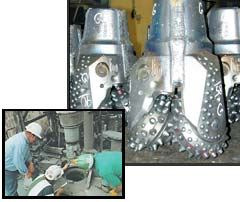
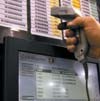


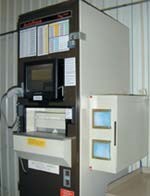
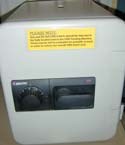

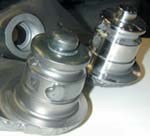









.jpg;maxWidth=300;quality=90)








